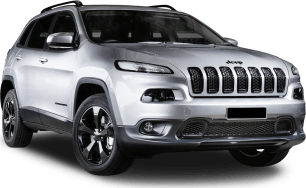Subaru’s pricing strategy is an interesting one. Generally, the brand’s entry-level models are priced above rivals, but top out well below them. For 2021 the XV range has four variants, two of which are available with the hybrid-drivetrain option.
The entry-level XV 2.0i ($29,690) sits above the entry-level Hyundai Kona ($26,600), Kia Sportage ($27,790), and Honda HR-V ($25,990). Keep in mind, the XV range is all-wheel drive by default, which is a value boost, but the unfortunate news is that we’d recommend you ignore the base XV altogether.
Included on the base 2.0i are 17-inch alloy wheels, a 6.5-inch multimedia touchscreen with wired Apple CarPlay and Android Auto connectivity, a 4.2-inch supervision cluster and 6.3-inch function screen, basic air conditioning, a single USB port, basic cloth seats, halogen headlights, standard cruise control, and some more basic trimmings. Not only is this car the only one with the more basic multimedia screen, but crucially it misses out on any of Subaru’s excellent EyeSight safety suite.
The starting point for your XV journey, then, should really be the 2.0i-L, starting at $31,990. The 2.0i-L ups the interior to include a dazzling 8.0-inch multimedia screen, improved interior trimmings with premium cloth seats and leather-trimmed steering wheel, dual-zone climate control, extra USB ports, and adaptive cruise control as part of the EyeSight safety suite.
Next up is the 2.0i-Premium at $34,590, which adds a sliding sunroof, heated wing mirrors, built-in navigation, a front-view camera, and the full safety suite with blind-spot monitoring, rear cross traffic alert, and rear auto emergency braking. This variant is now the best value, as it offers the full set of safety items previously only available on the top-spec car at a lower price.
This brings us to the top-spec 2.0i-S with an MSRP of $37,290, which adds LED headlights with auto high-beam assist, a side-view camera, leather interior trims with extended premium cabin upholstery and chrome finishes, auto power folding wing mirrors, leather-appointed seat trim with heated front seats and an eight-way power-adjustable driver’s seat, 18-inch alloy wheels, and extended functionality for the all-wheel-drive system.
Finally, the 2.0i-L and 2.0i-S can be chosen with the “eBoxer” hybrid drivetrain option, wearing MSRPs of $35,490 and $40,790 respectively. They mirror the specification of their 2.0i counterparts while adding silver exterior accents and a pedestrian-alert system. They also trade out the space-saver spare wheel in favour of a puncture-repair kit, due to the presence of an under-boot-floor lithium-ion battery system.






.png)












































.png)























 copy.png)
















